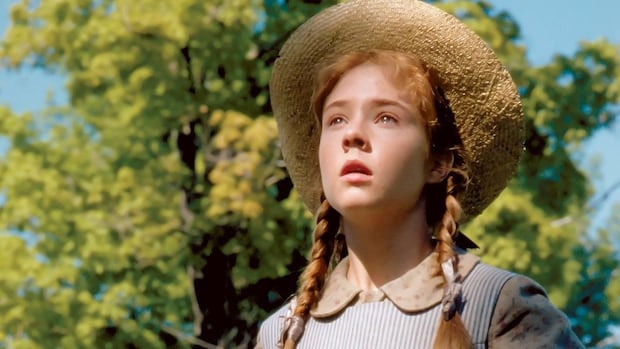Emerging Queer Voices is a monthly LGBTQ arts and culture column that features different up-and-coming LGBTQ writers. You can read more about the series and find all published editions here.I have a photo of me at nine years old, clutching two paperbacks to my chest: Rainbow Valley and Rilla of Ingleside, the final two books in Lucy Maud Montgomery’s Anne series. I had known exactly what Anne was getting at when she talked about “kindred spirits” and was delighted to find one in Anne’s own son, Walter Blythe. Just like Anne, Walter was creative, upstanding and judged for being overly sensitive to both beauty and horror. To the characters in 1900s Prince Edward Island, Walter’s unconventional masculinity was a problem that needed fixing. Anne didn’t see it that way, and it seemed Montgomery didn’t either. As an imaginative and sneakily morbid kid, I saw myself in Anne’s fevered affection for Diana Barry and related to her fear that growing up would irreparably change their friendship. I liked that she kept Gilbert hanging for so long, even when society pressured her to accept his proposal. Similarly, Una Meredith’s love for Walter is unrequited, and he simply doesn’t grow out of his passion for poetry. When he confesses to his younger sister that he feels he should’ve been born a girl, I was reminded of Anne arriving at Green Gables when the Cuthberts were expecting a boy. Here was proof that there had always been kids who defied expectations, whose in-betweenness was exactly what let them see into the secret places where real life and fantasy got a little blurry. I read with ghoulish intrigue when preteen Walter had a vision of the Pied Piper leading the boys in Rainbow Valley down to the shore and away — a prophecy of the Island’s young men going off to fight in the First World War. Walter’s last premonition would be that of his own death in battle, a twist that devastated my younger self almost as much as the death of Beth March in Little Women. I later realized that one of the reasons it had affected me so much was that, without knowing it, I had been reading him through a queer lens. The year I was 11, I invented my own character and filled four journals with stories about her, setting the action in P.E.I. in an earnest attempt to emulate Montgomery. And for a Grade 5 research project on the author, I handed in a poster that mentioned her death by drug overdose and suicide and got a talking-to. This was not true, my teacher told me, and also inappropriate. That summer, my family travelled to P.E.I. for the first time. When I look at pictures from the trip, I’m standing on the rocky red shores with a baseball cap and pageboy haircut, brooding one moment and ecstatically playing in the sea, the next. The November that followed, I came to the sobering realization that I was going to grow up to be a lesbian. And that led to another, more urgent understanding — that I was already a lesbian and always had been. Amybeth McNulty as Anne Shirley in the CBC series Anne With An E. (CBC)Things became liminal. I began to feel like much less of a child than my peers, harbouring what I felt needed to be a secret — at least till I was a teenager. I cut my hair and took discreet delight in the brief window before puberty when I was mistaken for a boy. Around the same time, Anne With an E started airing on TV. I appreciated that the show had gay and lesbian characters, but wondered if others had picked up on the queerness between the lines of the source material. The more I learned about Montgomery, the more fascinated I became (too bad a Cole Escola-style Oh, Maud! production wouldn’t be quite in line with our Canadian sensibilities). Why was her legacy so sanitized? Why was my teacher so adamant that Montgomery couldn’t have suffered? Why were so many readers unaware — as I was up until two years ago — that Rilla of Ingleside isn’t actually where the story ends? In the spring of 1942, Montgomery wrote The Blythes Are Quoted — a disturbing, bleak collection of short stories, poetry and dialogue involving murder, infidelity, antipathy and deception. One of the lighter stories, The Cheated Child, set when the Blythe children are still young, is about a neglected orphan named Pat who feels a “strange kinship” with Walter. Pat’s aunt does not approve of the boys’ friendship and calls Walter a sissy. Pat, in turn, feels “that he loved Walter Blythe with all his heart.” He dreams of having Anne as his mother, partly because she doesn’t laugh at his and Walter’s idea of an Other World. “He imagined that Walter Blythe was with him and that they talked over everything they saw,” Montgomery writes. “The red road, climbing gradually upward, was beautiful. Spruce woods … gardens full of gay hollyhocks and perennial phlox and marigolds … a stone wall with a door in it. A door that might — should — open into that Other World. He pictured what he and Walter might find there.”Curiously, neither Pat nor the Other World are mentioned outside of this story. Early in The Blythes Are Quoted, Anne reads an old poem of hers, To a Desired Friend, in which she speaks romantically of an unnamed friendship. Montgomery goes inside the mind of Walter as he listens to his mother’s words: “Walter, thinking: ‘I hope I’ll meet a friend like that some day.’ A voice no one hears: ‘You will. And his name will be death.’”The cover of The Blythes Are Quoted. (Penguin Canada)Is that voice Montgomery’s? God’s? Did it come from the same place the Piper did; from Pat and Walter’s Other World? That hopeless, foreboding voice turns up more and more as the book progresses. It seeps into Anne’s mind too as she notices the shadow of a cross over Walter’s face as he sleeps, forewarning her of the grave awaiting him in Courcelette, France. After Walter dies, Anne reads his poems aloud, and she and her children ask each other, Why does he write of the thrilling time spent in a city when he lived most of his life in rural P.E.I.? Did he really believe in the fairyland so heavily featured in his writing? When Walter writes about “the kiss of yesterday,” Anne’s eldest son, Jem, doubts “poor Walter ever kissed a girl in his life.” The book ends with Anne in her 70s, reading one of Walter’s wartime poems about him bayonetting a “pale, pretty boy.” Jem, a veteran himself, maintains that his pacifist brother never killed anyone and that the poem is only another example of the imagination he inherited from her. Despairing over the futility of his sacrifice, Anne tells her son she doesn’t think Walter could have gone on living if he had returned from the war. Montgomery wrote this ending, delivered the manuscript to her Toronto publisher, and died the same day. (To help destigmatize mental illness, Montgomery’s granddaughter, Kate Macdonald Butler, wrote an article in 2008 about the author’s struggles with barbiturate addiction and depression.)And it wasn’t until 67 years after Montgomery’s death that The Blythes Are Quoted was published in full, by the editor Benjamin Lefebvre. He also wrote the essay “Walter’s Closet,” in which he suggested P.E.I. was a symbolic closet for Walter. I am 20 now. Not only have I accepted my queerness, but I also can’t imagine the person or storyteller I would be without it. I went back to the Island this summer, for the first time in many years, with much of this knowledge on my mind. I found myself unexpectedly emotional. I thought about beauty, innocence — about queer spirits moving through time and history moving through the body. I thought about Canadian identity, about colonialism. I thought about the commercialization of Montgomery’s work on that land, in theme parks and boutiques and tourism. I wondered how it would have made her feel. I took walks on the red clay paths, past bright yellow fields of canola, under the lupine-coloured twilight. I could just about feel flashes of that fairyland, that Other World that flowed from Montgomery to Anne to Walter — and to kids like me.
In Anne of Green Gables, I found the kindred spirits and queer prophets I needed












